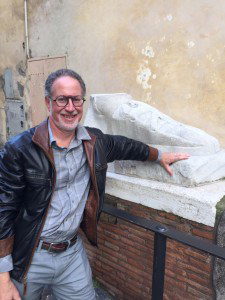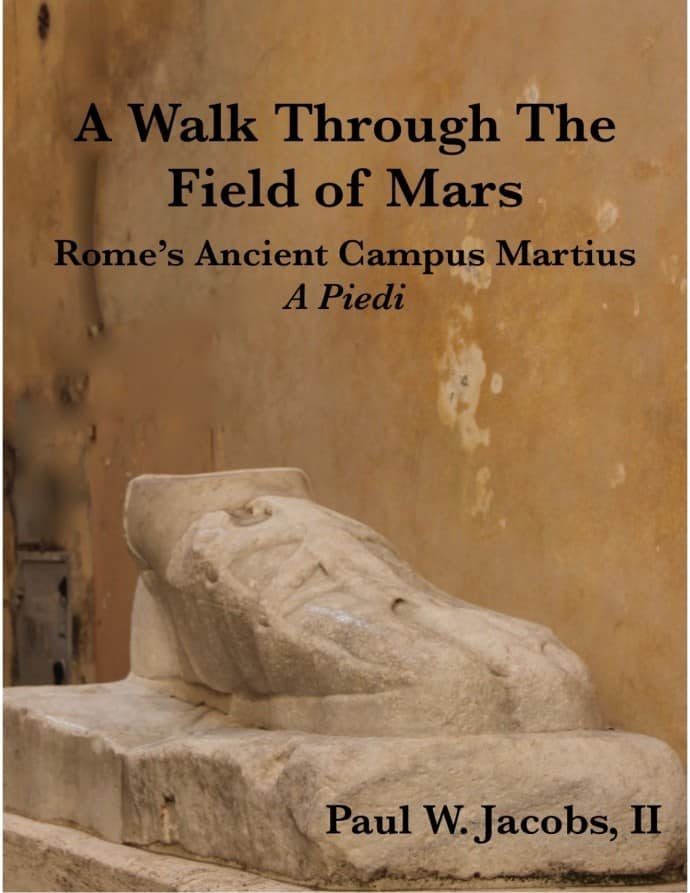Whether you just want to understand Rome better, or you really are into history, this book is fascinating and hard to put down
Rome of the Caesars exists in the world of the imagination. Apart from ancient monuments saved through conversion to churches such as the Pantheon or romantic and imposing edifices such as the Colosseum, much of ancient Rome now lies hidden. No where is this truer than in the part of the historic center that was the Campus Martius, or Field of Mars, the flat plain that runs north/south from the Piazza del Popolo to the Capitoline and east/west from the Corso to the Tiber River. In Rome’s earliest centuries, this was a marshy floodplain dedicated to the war god where citizen soldiers of the Republic came to muster for battle. Later, emperors filled the space with beautiful marble structures.
Now a warren of narrow, meandering streets punctuated by piazze and palazzi built between the sixteenth through eighteenth centuries and crammed into a space two-thirds the size of New York’s Central Park, the Campus Martius was the major entertainment center of ancient Rome. It could boast of having three stone theaters, the first two imperial bathhouses, an amphitheater, a stadium for Greek games and much more. So taken was the first century C.E. geographer Strabo with the place that he described the rest of the city “a mere accessory.”

The first downloadable eBook dedicated to this fascinating part of the city, A Walk Through the Field of Mars divides the Campus Martius into three self-guided tours, each about 2-3 hours in length. Formatted to be used with an iPad or similar device, the book contains hyperlinks to Google Maps and Rome museums as well as copious illustrations and plans of various structures and numerous photos of ancient statues and other art works recovered from the area. It also contains many quotations from the ancient observers who knew the Field of Mars first hand. This book supplements Campus Martius – The Field of Mars in the Life of Ancient Rome, written by Paul Jacobs and Diane Conlin and published in 2015 by Cambridge University Press. While the Cambridge book analyzes the development of the space from its humble beginnings to the end of the Empire and is divided thematically, the eBook is designed for the tourist on site who wants to understand the grandeur of the ancient monuments now torn down or built over. The walking tour may be purchased on Amazon or Apple iBooks.
To assist the traveler with the more modern enticements of the Field of Mars, Mr. Jacobs has created a blog (CampusMartiusRome.com) that presents his favorite sleeping, dining and entertainment venues among the once ancient glory. Enjoy.




